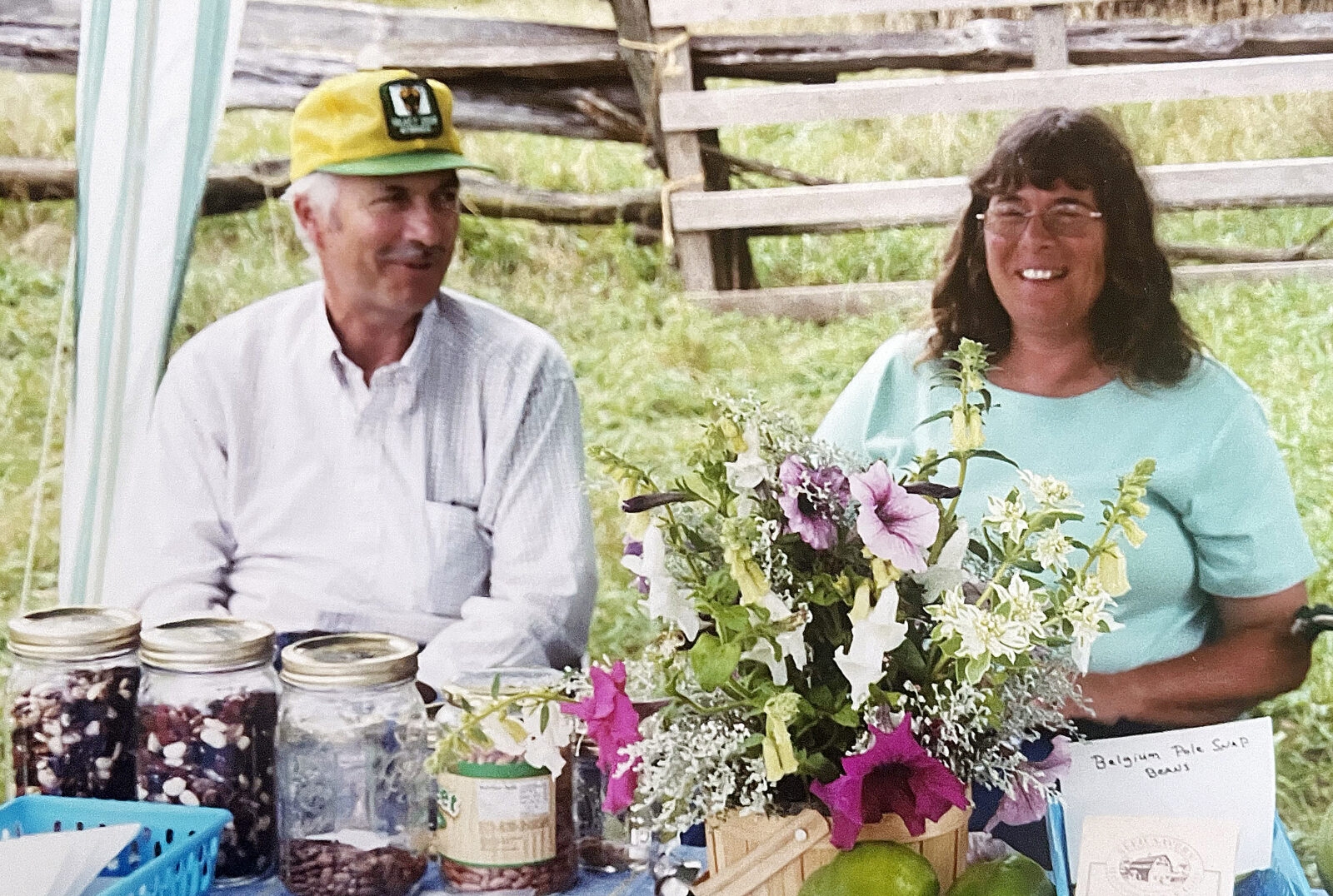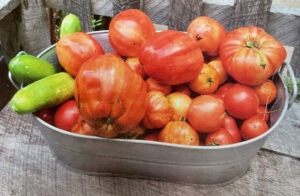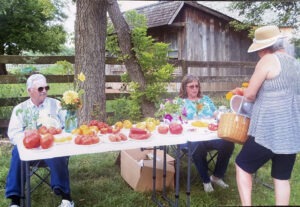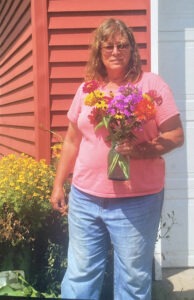Hope and Practice
To celebrate Seed Savers Exchange's 50th anniversary, we are featuring the work and inspiration of Exchange listers in the "Hope and Practice" series.

I’m a lifelong gardener and plant nut. I started saving seeds in the early ’90s when my favorite ‘California Giant’ petunias started disappearing from catalogs and the local store that carried the seeds closed. I had one extra packet and started saving the seeds from that. I’ve been saving these seeds ever since…and adding any other ‘California Giant’-type petunias to the mix.
Around that same time, my mother sent me a newspaper article about heirloom tomatoes and Gleckler’s Seedsmen [an heirloom seed company founded by Merlin Gleckler in 1947]. I found it really interesting so I ordered some of those heirloom tomatoes and grew them. That was just the start.
A neighbor, Mr. Tarter, later gave me some German tomatoes he had grown. I saved the seeds from them and have been growing them since 1996. They are big, red, and kind of heart-shaped but variable. Their flavor is wonderful, and they are still one of my most favorite tomatoes. They were known only as “that German tomato” so I began calling them ‘Mr. Tartar’s German’ tomato. Another favorite tomato is ‘Grand Belgium,’ acquired just two years ago from Joan Ballitch through the SSE Exchange. It’s a beautiful orange-yellow tomato with green shoulders that turns to a slight blush when ripe. I bring the best of these into the house to ripen so we can use them at peak ripeness. My husband and I both love these tomatoes; they’re so good.

I joined Seed Savers Exchange as a member while visiting Heritage Farm in Decorah while on vacation in September 2001. We’d been visiting friends in Northern Iowa when the September 11 attacks occurred. We decided to go home, and SSE’s Heritage Farm was on the way. That was such a scary and chaotic time, but Heritage Farm was so peaceful and calming.
I also hoped SSE could help me find an heirloom bean that my family had grown. My grandparents were Belgian immigrants, and my sisters and brothers and I grew up in a house across a small hay field from them. We visited them so often that we wore a path through the middle of the field—it was a big deal when you were old enough to cross the path alone to get to May and Pay’s house. They had a beautiful garden where they grew pole beans from seed that had come from Belgium. I thought that was just the coolest thing. I found the seeds after my grandmother passed away, but they didn’t germinate. However, in 2002, I received ‘Belgium’ beans from Exchange lister PA SI G [Guy Simpson], an optometrist who got eight varieties of heirloom beans from a patient. Only two plants, however, survived the groundhogs; one was ‘Belgium,’ a pole snap bean, and the other was ‘Austrian Kidney,’ a red dry bush bean. I’ve grown ‘Belgium’ almost every year since then, and it is a great, productive variety.

I save seeds from my garden each year for my own use and to keep these wonderful, delicious varieties available for others. I’ve enjoyed showing my favorite heirlooms and swapping seeds for a number of years at the Heirloom Garden Show at the Garfield Farm Museum in La Fox, Illinois, west of Chicago, usually held in late August. The museum staff really welcomes and appreciates visitors and volunteers. It’s a great place to meet people from different walks of life interested in heirloom plants.

You can expand what you grow by learning to start seeds (especially indoors) and to save them. I learned a lot by reading books like Suzanne Ashworth’s Seed to Seed and Nancy Bubel’s The New Seed-Starters Handbook. I found Growing and Propagating Wild Flowers by Harry Phillips especially helpful for learning about cold stratification—seeds that need a cool moist treatment before they’ll sprout; lots of trees, perennials, and wild flowers need this treatment in order to grow.
One of my favorite things about SSE is the Yearbook [the print directory of the online Exchange seed swap]. I enjoy reading the lister profiles, learning about their different projects and updates, and marveling at the sheer number of interesting heirlooms they’re making available.
Participating in the Exchange has been very rewarding. I’ve learned so much, met and corresponded with people I otherwise never would have, and found heirloom vegetables and flower varieties I love that I want to grow as long as I can. I would encourage anybody with an interest in gardening to give the Exchange a try and to think about becoming a listed member.
Gayle Saberniak of Chalmers, Indiana, is a longtime Seed Savers Exchange member and Exchange lister.
Hope and Practice
To celebrate Seed Savers Exchange's 50th anniversary, we are featuring the work and inspiration of Exchange listers in the "Hope and Practice" series.